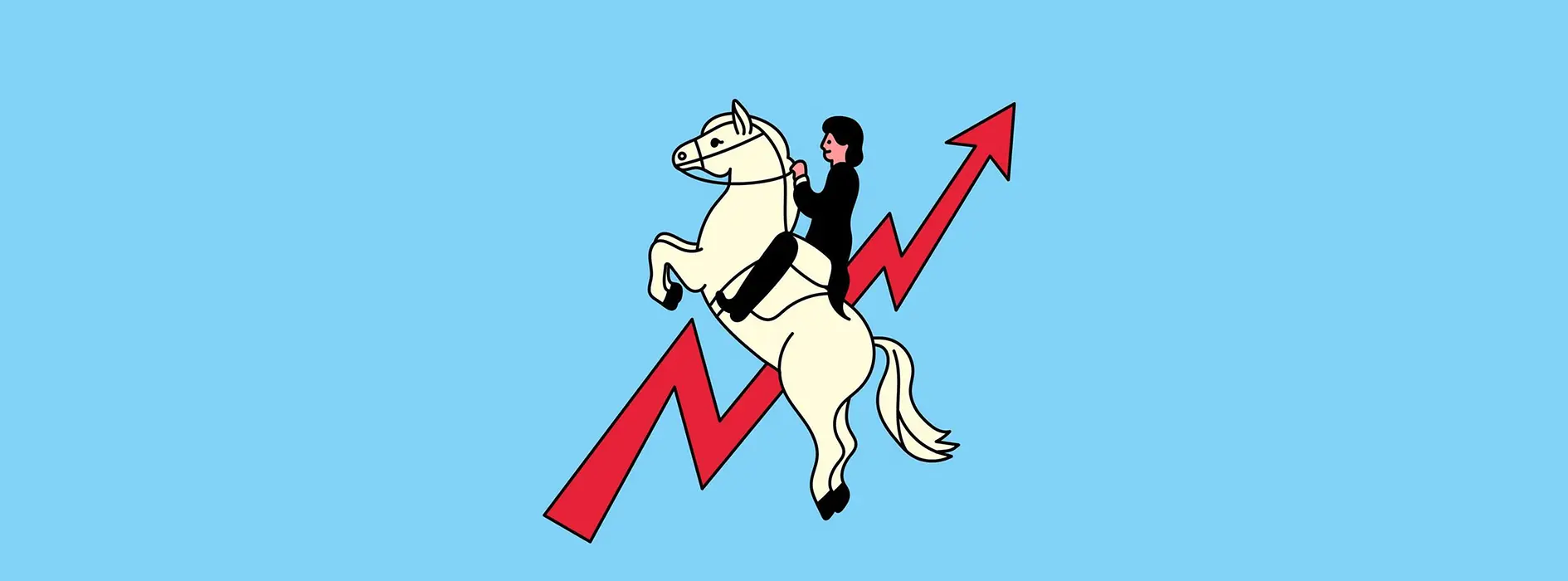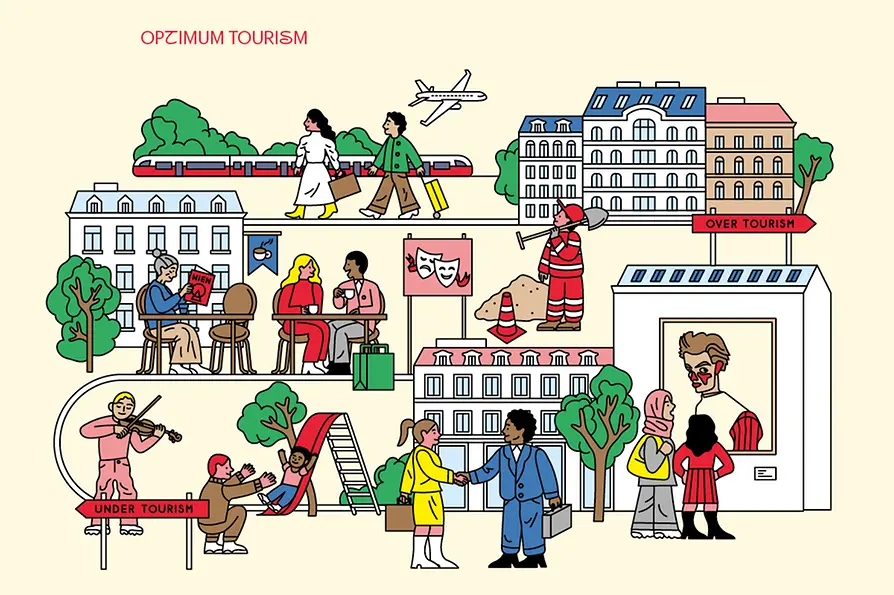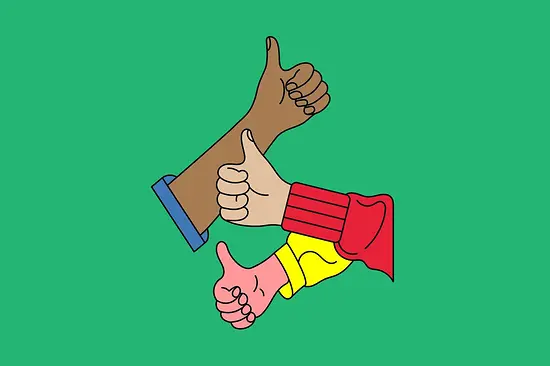Mission: Optimum Tourism
The city is sharpening the focus of its Visitor Economy Strategy with a view to getting the most out of the destination, its businesses, residents and guests. The ultimate goal is tourism that benefits everyone. More than half of the world‘s population lives in cities. Where 80% of global economic output is generated. Now, Vienna, too, has more than two million inhabitants. Over the past 10 years, the capital has – on average – welcomed 66 new residents each day. And the trend towards increased urbanization is continuing. It is expected that international mobility will rise sharply, which will also fuel an increase in city tourism. This creates jobs and fuels dynamism. But how can we achieve the kind of growth that actually strengthens the qualities of the city – and does not destroy the things that we love about it in the first place?
The solution is to strike a healthy balance between resident and visitor satisfaction to create an optimum. A sweet spot that everyone benefits from. And then maintaining it! If this balance is jeopardized, corrective action must be taken to restore it. Not only is avoiding undesirable developments – such as overloads –important, but the destination also has to be primed and ready to react to new crises and challenges.
No Under-Tourism, no Over-Tourism: Optimum Tourism
The Covid-19 pandemic made it painfully clear just how inextricably linked the Visitor Economy is to the city. Visitors – who not only contribute value, but also make the city colorful, diverse and lively – stayed away. Induced economic impact shrank, demand collapsed and supply withered. Not only did this cause severe problems for a large number of businesses and companies; it also brought a reduction in variety in terms of the offerings available to local residents – which, in turn, impacted the city’s diversity and flair. A clear case of “undertourism”.
At the same time, we know which problems Overtourism can cause in other destinations. Privatized profits while costs are socialized, housing shortages and the development of monocultures.
Vienna has a strategy against this! We want neither Under- nor Over-Tourism, but Optimum Tourism. The kind of tourism that adds value without compromising the qualities of the destination. To achieve this, we need to actively steer growth. This is a management task, and Vienna can do this.
Good growth is sustainable
“Optimum Tourism” is also sustainable tourism, because sustainable growth is the only viable form of long-term growth. But sustainability does not mean rejecting growth. It is a question of shaping it in such a way that the destination uses the resources available to it responsibly and participants in the Visitor Economy are able to remain competitive. It’s also about consistently pursuing the city’s path as a prototype of an inclusive city – all in the spirit of social sustainability. Acting sustainably is not just a principle of action; it also involves negotiating goals for sustainable development that are subsequently followed through on, by means of concrete measures. Rather than vague and arbitrary measures, specific key performance indicators (KPIs) are used to keep track of progress – to ensure that sustainability does not simply become a buzzword.
Public spaces - a valueable asset
An important element of designing Optimum Tourism is viewing public spaces as a valuable asset and treating them with the care they deserve. After all, the city is not an open-air amusement park. It is a space that two million people call home.
Good growth: what exactly does that mean?
Reconciling the needs of a growing population with those of visitors – especially in areas where competition might arise over goods that are in short supply, such as housing and public spaces.
Attractive jobs and a fair distribution of the added value generated through the growth of tourism. Avoiding concentration of stressors and ensuring that as many people as possible benefit from tourism.
Avoiding tourist monocultures and self-contained value chains that benefit individuals while relying on the general public to shoulder the burden.
Creating new offerings that benefit residents and visitors alike – in a range of segments such as culture, cuisine and leisure.
Ensuring that today’s choices in life and business do not come at the expense of tomorrow‘s generation. To achieve this, the Visitor Economy Strategy is creating space for specific projects and initiatives that are effective, interconnectable and profitable. The city’s sustainability strategies are also part of it.
As a quality of life and sustainability pioneer, Vienna continues to be a highly attractive proposition in a competitive international market – as a center of life for residents and expats, as a location for businesses and as a travel destination for visitors from all over the world.
Good growth: focus on four areas
Four specific areas were identified in the strategy development process. These are particularly relevant for the successful development of the destination in terms of Optimum Tourism. The aim is to develop sustainable success models within each area – as competitive factors for the companies and as “attractiveness factors” for the destination.
- Culture is an asset: Places of encounter in public spaces, diverse cultural offerings in local neighborhoods (Grätzel), curation of themed years: the more accessible that cultural offerings are, the more they benefit visitors and locals.
- Vienna is a city of international encounters: Vienna is an international hub for diplomacy, the meeting industry and business events: the location’s role as a gateway and hub provides a competitive advantage.
- Urban development doesn`t just happen on its own: Preserving the appeal of public spaces, polycentric destination, high quality of place in all parts of the city: balancing interests while also keeping a close eye on local qualities.
- Business innovation as a lever for the future: Resource conservation, circular economy, accessibility, digital transformation: companies in the Visitor Economy focus on inclusivity and sustainability as success factors.






